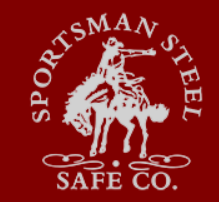Protecting firearms is a serious responsibility, and securing them within a robust gun safe is paramount. This article delves into the crucial factors to consider when selecting the ideal gun safe, providing a comprehensive overview to help you make an informed decision. From material strength and security features to practical considerations like size and location, we’ll explore the key elements that contribute to a safe and reliable storage solution.
**Understanding Your Needs: Defining the Right Safe**
Before embarking on the search for the perfect gun safe, it’s essential to assess your specific requirements. Several factors will influence your choice.
* **Number and Type of Firearms:** The quantity and caliber of firearms will significantly impact the safe’s size and internal capacity. A safe designed for a few handguns might not adequately accommodate a collection of rifles and shotguns.
* **Security Level:** Assess the potential threat level in your environment. If you live in a high-crime area or possess valuable firearms, a higher security rating is crucial. This often translates to heavier steel, reinforced locks, and advanced security features.
* **Budget:** Gun safes vary considerably in price, depending on the materials, features, and security level. Establish a realistic budget before beginning your search to avoid disappointment or overspending.
* **Available Space:** Measure the available space where the safe will be placed. Consider both the internal dimensions for your firearms and the external dimensions for proper placement.
* **Accessibility:** How frequently will you need to access the safe? A safe located in a convenient location is more practical than one that requires a significant effort to open.
**Materials and Construction: Building a Fortress**
The quality of materials and construction directly impacts the safe’s security and longevity.
* **Steel Thickness:** The thickness of the steel used in the safe’s construction is a critical factor. Heavier steel provides enhanced resistance to forced entry attempts. Look for safes that meet or exceed industry standards. Often, manufacturers provide specifications regarding the steel gauge.
* **Reinforced Locks:** The quality of the locking mechanism is equally important. Advanced locking systems with multiple locking points and high-security deadbolts provide a stronger deterrent against unauthorized access. Consider safes with key-operated locks, combination locks, or electronic keypads, depending on your preference and security needs.
* **Fire Resistance (Optional):** If fire protection is a concern, look for safes with fire-resistant ratings. These safes are designed to protect firearms and valuables from high temperatures for a specified period. This is particularly relevant for individuals with valuable collections in areas prone to wildfires or house fires.
**Security Features: Beyond the Basics**
Beyond basic construction, several security features add an extra layer of protection.
* **Reinforced Hinges and Latches:** Robust hinges and latches are crucial to prevent the safe from being pried open or forced apart.
* **Anti-Drilling Protection:** Some safes feature special plates or materials to resist drilling attempts. This is an important feature to consider for environments with sophisticated or determined intruders.
* **Exterior Protection:** A safe’s exterior construction also matters. Safes with reinforced exteriors are more resilient to forceful attacks. Look for safes with reinforced exterior plating.
**Types of Gun Safes: Tailored Solutions**
Gun safes come in various styles and sizes to cater to diverse needs.
* **Floor Safes:** These are typically larger and heavier, providing a high level of security. They are often used for extensive collections and offer maximum protection.
* **Wall Safes:** These are designed to be mounted into a wall, conserving floor space. They are a good option for those with limited floor space.
* **Cabinet Safes:** These are often smaller and more compact, suitable for storing a limited number of firearms.
**Practical Considerations: Size and Location**
* **Internal Space:** Thoroughly measure the size of your firearms to ensure they fit comfortably within the safe’s internal space.
* **Exterior Dimensions:** Consider the safe’s overall dimensions, including height, width, and depth, to ensure it fits comfortably in its designated location.
* **Safe Placement:** Place the safe in a secure location, ideally in a room that is not easily accessible to intruders. Avoid placing it in areas that are easily visible from outside the home.
**Real-World Example: A Case Study**
A homeowner, concerned about the security of their substantial firearm collection, researched various gun safe models. They ultimately selected a floor safe with a reinforced steel construction, multiple locking mechanisms, and anti-drill protection. The safe was installed in a secure room, away from windows and doors. This example highlights the importance of prioritizing security features, considering the number of firearms, and selecting a safe that meets the homeowner’s specific needs.
**Conclusion: Making the Right Choice**
Choosing the best gun safe is a crucial step in firearm security. By carefully evaluating your needs, considering the materials and construction, and understanding the security features, you can select a safe that offers both protection and peace of mind. Remember to consider the number and type of firearms, the security level needed, your budget, available space, and accessibility. Prioritize quality materials, reinforced locks, and advanced security features. Ultimately, the right gun safe is one that aligns with your specific needs and provides a reliable defense against potential threats.
